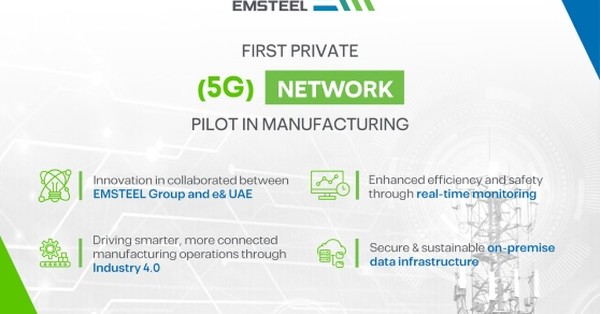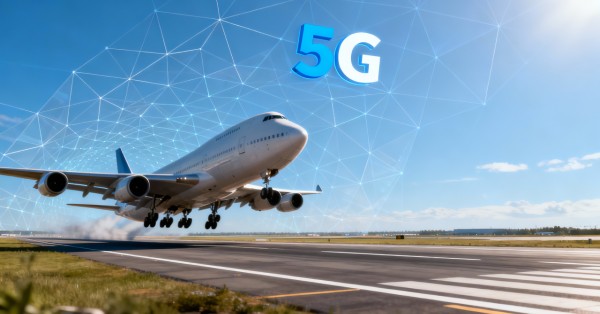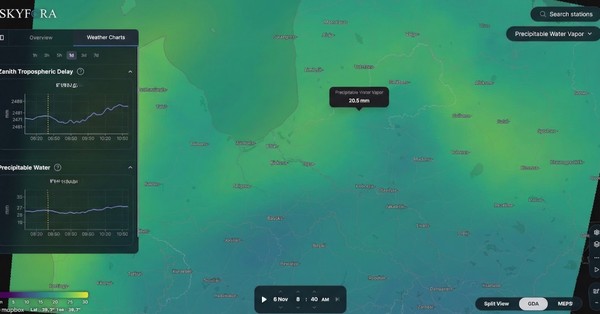Introduction: The Dawn of Private Wireless Networks
Industrial digitalization is experiencing a revolution with the rise of private wireless networks. In collaboration with GlobalData, Nokia highlights these technologies’ transformative impact on industries ranging from manufacturing to logistics and oil and gas. Early adopters of private wireless networks are reporting substantial returns on investment, rapid total cost of ownership reductions, and significant improvements in operational efficiency. This article delves into the 2024 Industrial Digitalization Report findings, exploring the evolution, benefits, and future potential of private wireless and edge infrastructure.
From Pilot to Full Deployment: Market Evolution
Private wireless networks have matured significantly since their early adoption stages. Initially deployed in single-use cases and locations as proof of concept (PoCs), enterprises are now expanding private wireless networks to multiple sites and broader applications. The key driver behind this shift is the reliable, pervasive, and secure connectivity that private wireless networks offer, enabling advanced use cases like AI-powered analytics and critical communication systems.
Expanding Use Cases of Private Wireless Networks
Early private wireless network deployments primarily aimed to achieve connectivity in challenging environments where other technologies failed. Today, businesses are leveraging private wireless networks to support a wider array of applications. For instance, on-premise edge technology enables ultra-low latency scenarios that are crucial for AI and analytics. The result is a seamless integration of drones, automated guided vehicles (AGVs), and other industrial IoT devices into the digital ecosystem.
Scaling Private Wireless Networks for Broader Applications
According to the latest Nokia report, enterprises are scaling private wireless networks for additional use cases and across more industrial sites. Remarkably, 45% of organizations leverage private wireless for more use cases than initially planned. Moreover, 100% of the interviewed enterprises have expanded their private wireless network usage to additional locations, highlighting the technology’s scalability and adaptability.
ROI and TCO Advantages of Private Wireless Networks
One of the most compelling reasons for the rapid adoption of private wireless networks is the impressive return on investment (ROI). According to the GlobalData survey, 93% of enterprises achieved ROI within 12 months, with 78% seeing positive results within six months. This rapid ROI is attributed to significant reductions in operational expenses (OPEX) and total cost of ownership (TCO).
Cost-Efficiency and Scalability of Private Wireless Networks
Private wireless networks have proven more cost-effective than traditional WiFi and public LTE/5G networks.
Enterprises reported substantial OPEX savings, with 59% achieving 10% or more reductions.
The ability to switch off legacy infrastructure and reduce equipment costs further enhances the financial benefits of private wireless network deployments. Additionally, the scalability of private wireless solutions allows businesses to expand coverage and capacity with minimal additional investment.
Enhancing Worker Safety and Efficiency with Private Wireless
Private wireless networks are not only about connecting devices; they also play a critical role in improving worker safety and efficiency. In large industrial sites, private wireless networks facilitate better communication and collaboration among workers, reducing risks and enhancing productivity.
For example, connected worker solutions and analytics tools have led to over 10% improvements in worker collaboration and safety in 90% and 65% of enterprises, respectively.
Enhancing Quality Control with Video Analytics and IoT
Integrating video analytics and industrial IoT devices over private wireless networks has revolutionized quality control, predictive maintenance, and compliance monitoring. Enterprises can now maintain consistent and reliable throughput in locations where traditional WiFi networks struggled. This enhanced connectivity supports the seamless operation of AGVs and other automated systems, significantly boosting productivity.
Driving Sustainability with Private Wireless Networks
Private wireless networks are pivotal in driving sustainability efforts within industrial settings. Nearly 80% of organizations surveyed experienced improvements in their sustainability initiatives post-private wireless network deployment. Enhanced connectivity enables better monitoring and management of carbon emissions, reducing the need for physical travel and on-site inspections.
Reducing Carbon Footprints with Private Wireless Networks
Enterprises can track and analyze emissions data in real-time by connecting industrial IoT devices and sensors. This capability not only supports regulatory compliance but also helps identify areas for improvement. Using drones and automated systems further reduces the environmental impact by minimizing the need for petrol-powered vehicles.
Transformative Growth and New Revenue Opportunities
Private wireless networks are at the forefront of industrial transformation, enabling new revenue opportunities and innovative business models.
Over 61% of enterprises reported that their private wireless network solutions have opened new revenue streams, with an additional 22% currently exploring such opportunities.
This transformative potential drives businesses to continually expand their private wireless network deployments and explore new use cases.
Nokia’s Leadership in Private Wireless Networks
Nokia stands out as a leader in 4.9G/LTE and 5G technologies, evidenced by its significant number of global deployments. This widespread presence demonstrates their capability to serve diverse markets and meet various industry needs. Key highlights of Nokia’s global presence include:
- 625+ global enterprise customers across different industry sectors are using Nokia’s private wireless solutions.
- 1500+ mission-critical networks for various enterprises, including utilities, mines, airports, maritime ports, manufacturers, and logistics companies.
Strengthening Networks through Collaboration
Nokia’s network capabilities are enhanced through partnerships with service providers such as AT&T, A1, Citymesh, Boldyn Networks (Cellnex/Edzcom), Orange Business Service, and Verizon. These collaborations bring expertise in network operation and development, ensuring robust and scalable solutions.
Industrial partners such as Omron, Komatsu, Konecranes, MIR, Rexroth, Sandvik, Cargotec, and Hitachi Kokusai Electric further strengthen Nokia’s industrial connectivity, showcasing practical applications of Nokia’s technologies in transforming various industries.
Tailored Approach for Private Wireless Networks
Nokia offers a range of architecture options for private wireless networks, from autonomous private wireless systems to private wireless as a service and core slicing. This flexibility allows for tailored solutions that fit the unique requirements of different operational environments.
Ensuring Robustness and Reliability in Network Operations
Nokia’s solutions ensure high reliability with options like autonomous private wireless, deploying all network functions locally for uninterrupted operations, core slicing, and balancing on-premises and cloud-based components to address data confidentiality and latency requirements.
Scalability and Adaptability for Industry 4.0
Nokia’s hybrid architectures offer scalable solutions that cover wide areas of mobile and off-site assets. Spectrum flexibility caters to varied deployment needs, from licensed to shared and unlicensed, and is suitable for everything from industrial applications to public safety networks.
Industry 4.0-Ready Solutions
Nokia’s private network solutions are designed to meet the complex demands of modern industrial environments, combining robustness, reliability, scalability, and adaptability. These solutions include mission-critical connectivity, next-generation Wi-Fi, industrial edge solutions, certified industrial devices, and ecosystem-neutral applications.
Case Study: Lufthansa Industry Solutions and Private Wireless
Lufthansa Industry Solutions exemplifies the transformative power of private wireless networks. Collaborating with Nokia, Lufthansa deployed a private wireless network to support remote inspections of aircraft components, significantly reducing costs and carbon footprints. The success of this initial use case has led to further expansions, including coverage of large areas with minimal radio access points and integration of video analytics for quality control.
Lufthansa Technik began operating its 5G campus network based on the Release 15 standard more than two years ago at its Hamburg site, marking the first standalone deployment outside of Asia. This private 5G network enabled Lufthansa Technik to tackle data-intensive tasks and work more efficiently. Dr. Claudius Noak, IT Consultant, and technology scout with Lufthansa Industry Solutions, shared insights into the use cases, implementation process, and outcomes of this deployment.
More details on the above use case can be accessed Lufthansa Technik’s Private 5G Network: In-depth Outcomes and Outlook
Lufthansa Initial Use Case for remote inspections of aircraft components with Nokia
During aircraft engine overhauls, engines are disassembled, and each part is inspected separately. Previously, customers had to travel to Hamburg to participate in these inspections, incurring significant costs and carbon emissions. The private 5G network lets customers attend inspections virtually through live high-definition video feeds. This setup includes a mobile device providing real-time, high-resolution video streaming, enabling joint decision-making about inspected components. The network is configured to handle demanding upload speeds and adequate computing power for live transmissions.
Key Steps in Implementing Private Wireless Networks
Lufthansa Technik’s journey with private 5G networks involved several key steps:
- Finding Concrete Use Cases: The initial focus was to identify connectivity problems that 5G could solve. Collaboration with the innovation department helped prioritize use cases based on feasibility and added value.
- Choosing Technology Partners: Deciding between network operators and pure equipment suppliers was crucial. The choice depended on the support needed for specific use cases.
- Using Own Frequencies: Lufthansa Technik opted for its own frequencies in the 3.7-3.8 GHz band, leased from the German regulator BNetzA. This choice provided higher security and allowed for network configurations tailored to specific project needs.
- Support During Rollout: Experienced support ensured efficient project implementation, preventing potential delays.
Outcomes and Expansion of Private Wireless Networks
The deployment of the private wireless network brought immediate improvements.
Dr. Claudius Noak emphasized: “The deployment of private wireless networks improved our connectivity from the outset. It gives us a stable, reliable, and secure connection across an extensive area with only a few access points, which is essential for virtual table inspection. The additional value came from the expansion and integration of new use cases. Since the deployment, we have extended the number of radio locations at the site, with private wireless networks connecting over 50 devices, which will soon grow into the hundreds, with the ability to ultimately support over 1,000 connected devices.”
The Impact of 5G During the COVID-19 Pandemic
The private 5G network proved invaluable during the COVID-19 pandemic, allowing Lufthansa Technik to continue remote inspections when travel restrictions were in place. The network provided a stable, high-quality video stream across an 8,000-square-meter site, facilitating remote consultations with airlines on engine maintenance and cabin refits. This capability maintained business operations and reduced travel, logistics costs, and environmental impact.
Future Prospects of Private Wireless Networks
Lufthansa Technik’s successful implementation and expansion of private wireless networks highlight the technology’s potential to drive industrial transformation. The network’s ability to support additional use cases, such as integrating edge capabilities for AI analytics, showcases the future possibilities for enterprises adopting private wireless solutions. Dr. Noak’s insights underscore the importance of a well-planned deployment strategy, tailored network configurations, and the integration of complementary technologies to maximize the benefits of private wireless networks.
A Future Powered by Private Wireless
The 2024 Industrial Digitalization Report underscores the significant benefits of private wireless networks in driving industrial efficiency, safety, and sustainability. As enterprises continue to explore and expand private wireless network deployments, the technology is poised to become a cornerstone of Industry 4.0. With Nokia’s pioneering solutions, businesses worldwide are well-positioned to harness the full potential of private wireless networks, paving the way for a more connected and efficient industrial future.







































